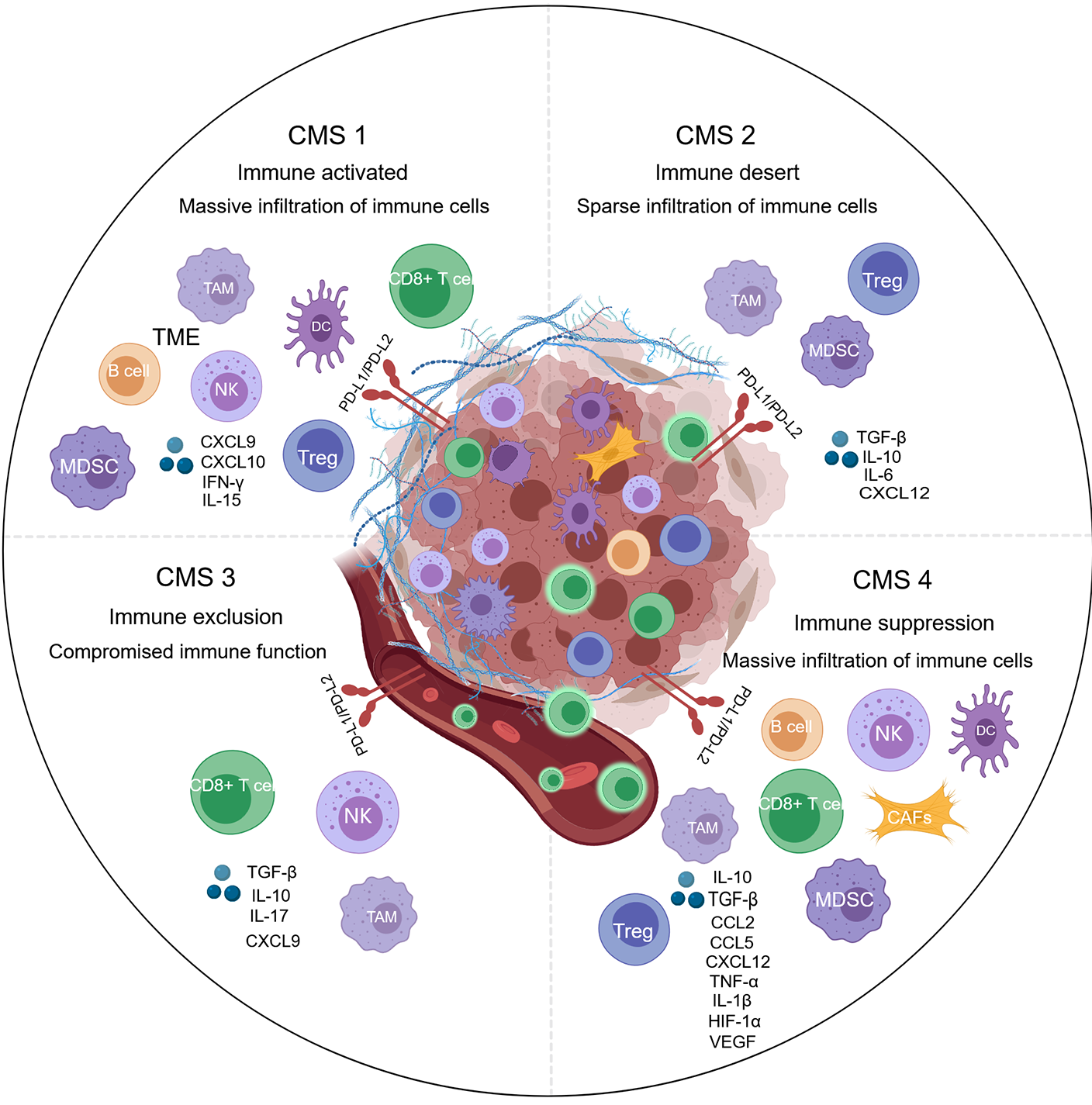Copyright
©The Author(s) 2025.
World J Gastroenterol. Jun 7, 2025; 31(21): 106964
Published online Jun 7, 2025. doi: 10.3748/wjg.v31.i21.106964
Published online Jun 7, 2025. doi: 10.3748/wjg.v31.i21.106964
Figure 4 The distinct immune landscapes of the tumor microenvironments across the four consensus molecular subtypes of colorectal cancer.
Created with MedPeer (medpeer.cn). Copyright permission has been obtained in the Supplementary material. Consensus molecular subtypes (CMS) 1 is characterized by an “immune activated” environment with massive immune cells. CMS2 is an “immune desert” with sparse infiltration of immune cells. CMS3 is called “immune exclusion”, in which immune cells compromised are present and located on the periphery of the tumor nest. CMS4 exhibits “immune suppression”, even with an abundance of immune cells. CRC: Colorectal cancer; CMS: Consensus molecular subtypes; DC: Dendritic cells; MDSC: Myeloid-derived suppressor cell; TAM: Tumor-associated macrophages; EMT: Epithelial-mesenchymal transition; PD-L1: Programmed death-ligand 1; PD-L2: Programmed death-ligand 2; IL: Interleukin; TGF-β: Transforming growth factor beta; TME: Tumor microenvironment ; NK: Natural killer; CXCL: C-X-C chemokine ligand; IFN: Interferon; CCL: Chemokine (C-C motif) ligand; HIF-1α: Hypoxia-inducible factor-1α; VEGF: Vascular endothelial growth factor.
- Citation: Qi GX, Zhao RX, Gao C, Ma ZY, Wang S, Xu J. Recent advances and challenges in colorectal cancer: From molecular research to treatment. World J Gastroenterol 2025; 31(21): 106964
- URL: https://www.wjgnet.com/1007-9327/full/v31/i21/106964.htm
- DOI: https://dx.doi.org/10.3748/wjg.v31.i21.106964









